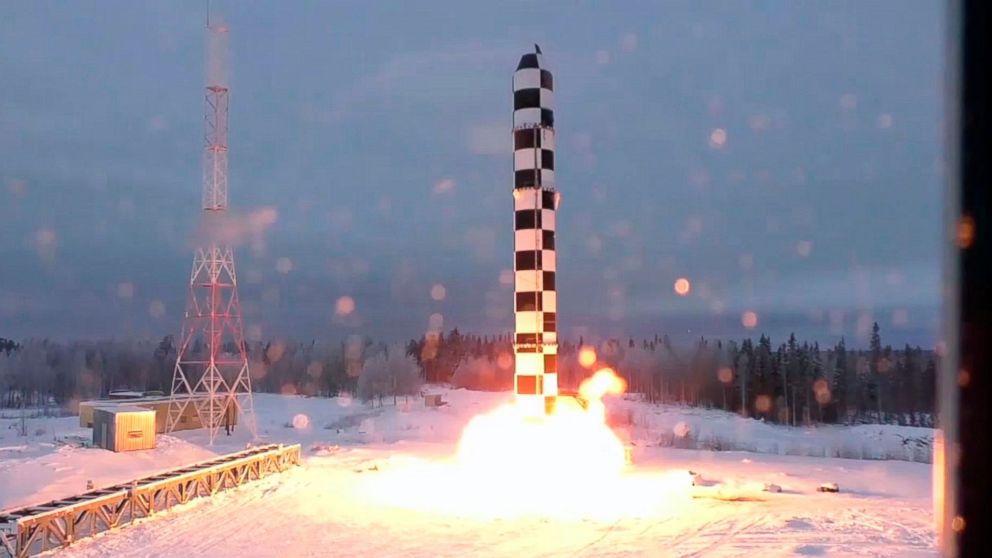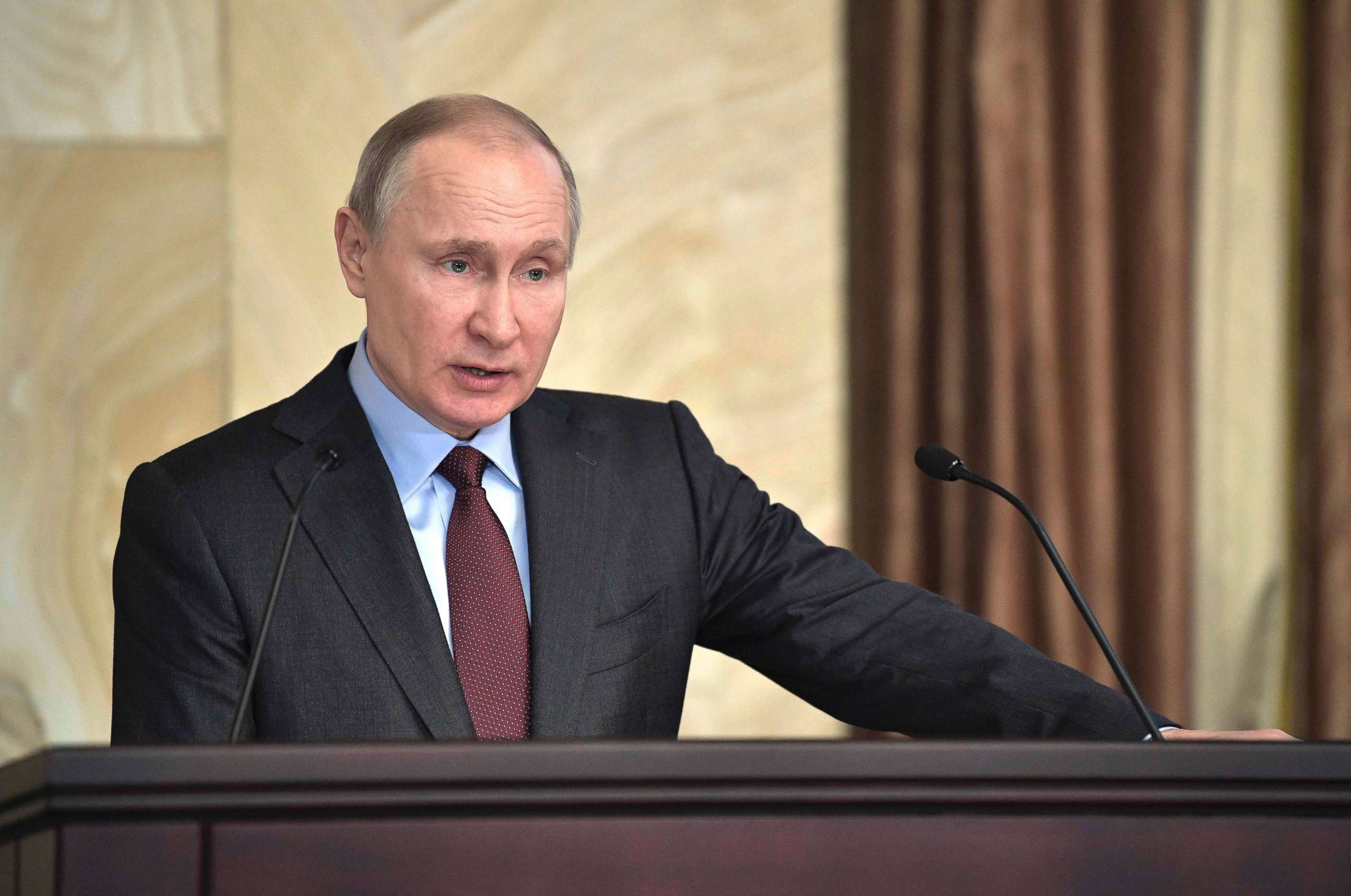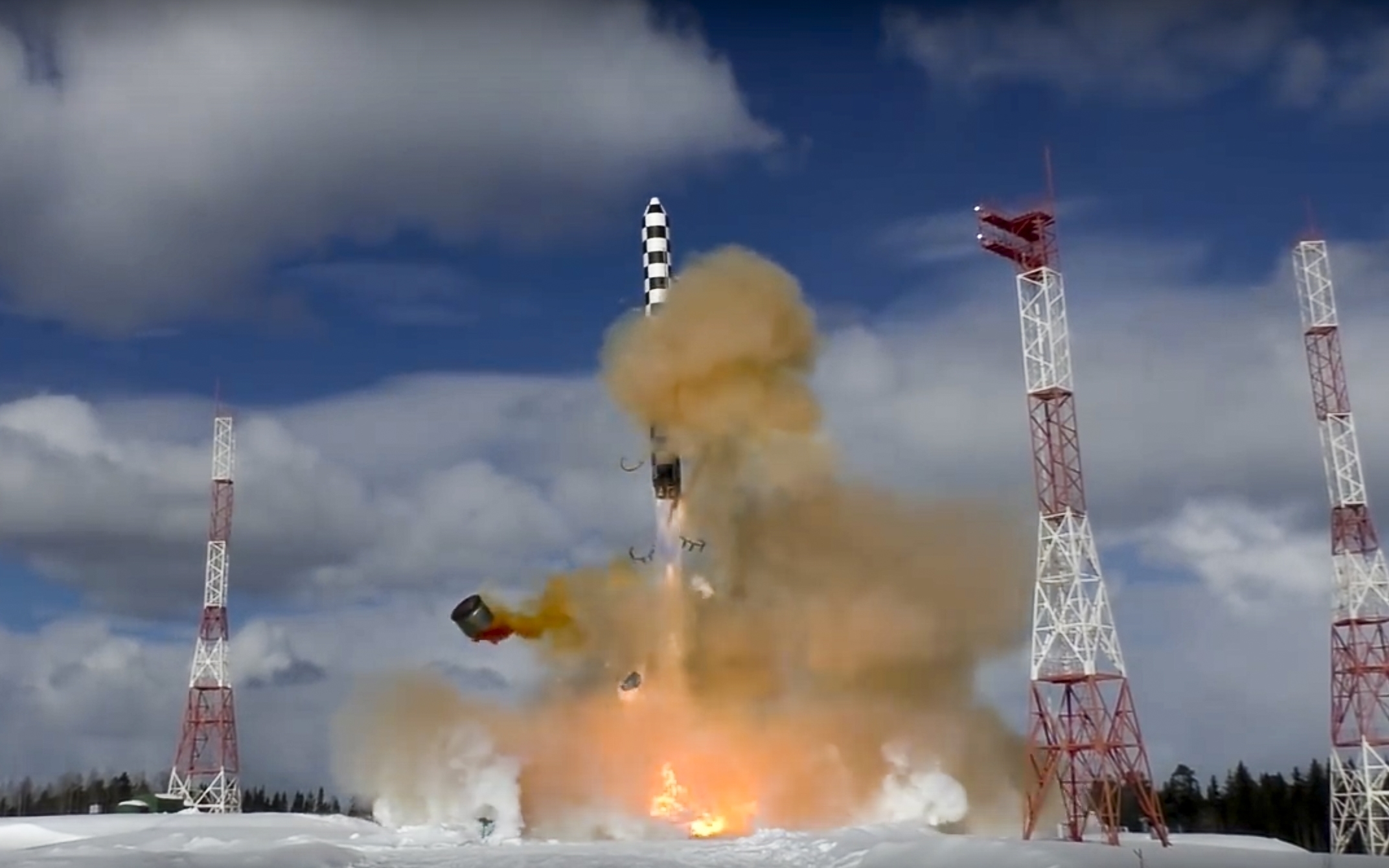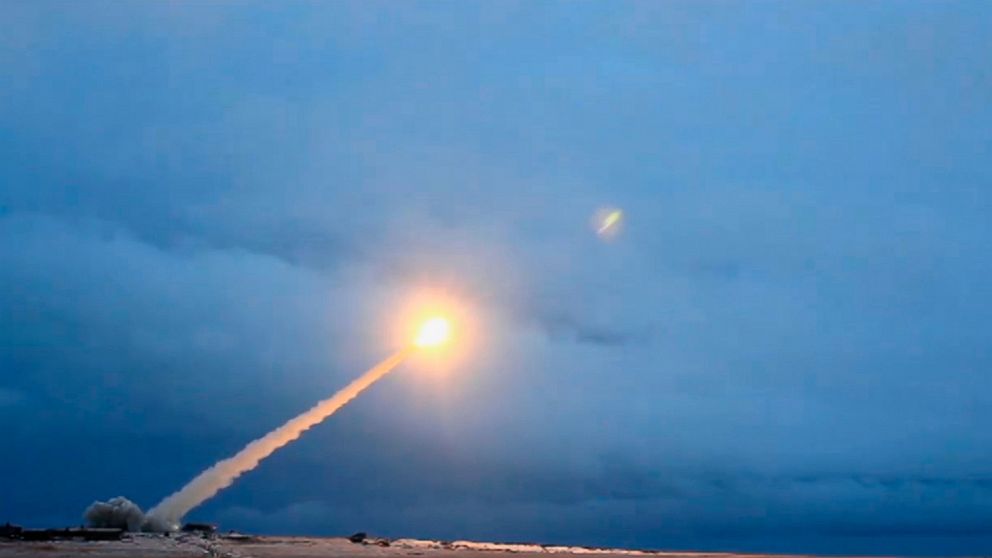Russia has tested new nuclear missile that NATO calls 'Satan 2'
The Sarmat missile is meant to update Russia's current ICBM arsenal.
Moscow -- Russia’s military on Friday said it had successfully carried out a second test launch of its most advanced nuclear-capable intercontinental ballistic missile.
The country’s defense ministry released a video showing what it said was the launch of a RS-28 ‘Sarmat’ missile from a base in Plesetsk in northwest Russia, close to the Arctic Circle.

The Sarmat is a heavy ICBM intended to replace Russia’s aging, Soviet-era missiles that form the basis of its nuclear deterrent. The Sarmat, which NATO named “Satan 2,” has been in development since at least 2011 and is believed to be able to carry an increased number of nuclear warheads and has an increased range.
The Sarmat was among the arsenal of new “invincible” nuclear weapons that Russia’s president Vladimir Putin touted in a speech in March and that included a nuclear-powered cruise missile and a hypersonic intercontinental missile.

As with the other weapons he unveiled in his speech, Putin hailed the Sarmat as rendering ineffective even the most advanced missile defense systems that the United States might deploy for the foreseeable future.
“No kind of, not even future missile defense systems will offer any trouble to the Russian rocket complex, Sarmat,” Putin said in his state of the nation speech.
Russia’s military said this was the second time it has successfully test-launched a Sarmat. An article announcing the latest launch in the defense ministry publication, Red Star, said the rocket had been tested in its pre-launch and first stage of flight phases.
A defense source told Russia's state news agency on Thursday that the missile will enter service by 2021, with serial production beginning in 2020.

Experts have said Putin’s claims about the missile were hyperbolic, given that Russia’s current Voyevoda-class ICBMs can already easily overwhelm the U.S.’ missile defenses, as they could have in the Cold War.
The chief innovation of the Sarmat is its ability to carry a large number of guided warheads, meaning that it will be able to rain down individual warheads flying themselves to targets. The massive rocket, which Putin claimed weighs over 200 tons, is believed to be able to fly 16,000 miles and is capable of flying over the South Pole to strike the U.S.
Experts have questioned how complete some of the new weapons vaunted by Putin are in reality, noting that they are long-term hedges against advances in missile defense technology. Putin’s boasts also seemed targeted in large part at a domestic audience, shortly ahead of a presidential election.
Russia has long protested the U.S.’ development of a missile defense shield in Europe, which the U.S. argues is intended to guard against North Korea and Iran, but which the Kremlin says can be directed at Russia.

Putin presented the Sarmat and the other superweapons render missile defense useless and suggested it should prompt the U.S. to abandon the Europe-based shield.
Putin’s saber-rattling with the weapons, which he accompanied in his speech with warnings that the U.S. had failed “to contain Russia,” has prompted fears of a new nuclear arms race, as China also works to develop its own next-generation weapons and President Donald Trump has spoken of massively increasing the U.S. nuclear arsenal.
Putin has since said he does not want an arms race. President Trump last week said that he expected to meet with Putin in the not too distant future to discuss the issue.




